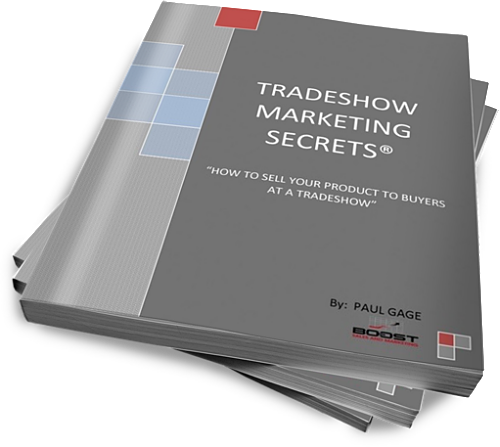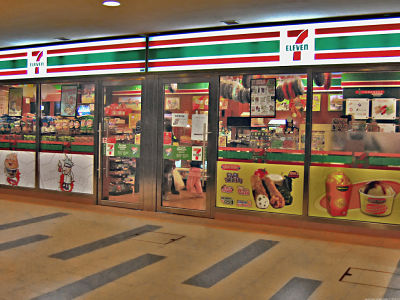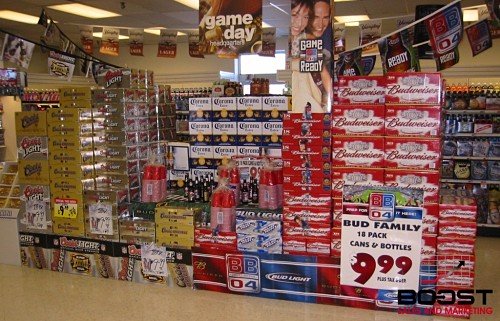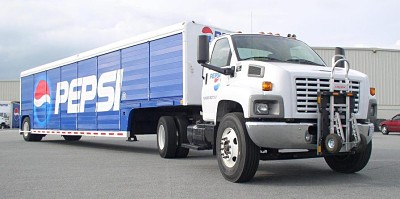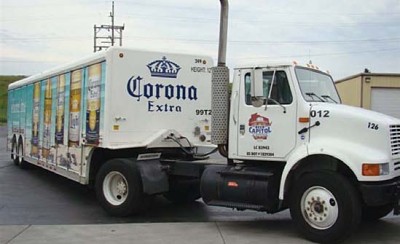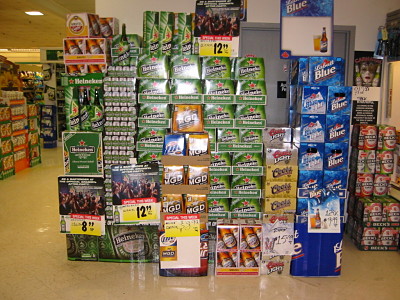Sell your product to Catalog Retailers
Catalogs are a perfect vehicle for selling all types of products. From products with a universal appeal to products that fit a very specific niche; selling your product through catalogs and other direct marketers can be your key to the marketplace.
The great thing about dealing with catalogs is that most are very receptive to learning about new products available that fit their particular customer base, and are willing to work with the smaller operation that may only have one or two products to offer. Where most brick and mortar retailers don't want to bother with a single (or few) product operation.
And if you consider the sales potential for your product if you do get into a catalog, you can see why this is such a great opportunity for you. If just one decent size catalog picks up your product, and carries it for a full year, you could sell anywhere from 5,000 to 50,000 units, or more, in a year.
Even if they just do a test of your product, and never order again, you could sell 10,000 or more units.
The other beauty of catalogs is that if you are a small manufacturer that can only produce a limited number of units per month until you are bigger, you can go after smaller catalogs that do not sell as many products overall. Then as your capabilities grow, you can add more catalogs and go after bigger ones.
It is the goal of this report to give you a concise understanding of how to get your product ready for approaching catalogs (or any other retailer), what catalogs will expect from you, and how to find catalogs to contact. While there are countless scenarios, we will try to cover the most import factors.
Catalog stats:
- There are over 11,000 consumer catalogs and over 5,500 business-to-business catalogs in the USA alone; representing every possible product line and interest.
- Catalogs depend on offering new and interesting products to their customers. Catalogs like to promote things that are not easily found at retail outlets or are perceived as hard to find, products that are better than similar products offered at retail, products that are not available anywhere else, or products that add to their "best selection" of a certain product category.
To keep their catalog fresh and interesting to their customers, the majority of catalogs introduce over 20% new products each year in their catalog. With the remainder introducing 1-20%.
- A recent survey of catalog companies shows that 98% of respondents' sourced products domestically in the U.S. Sixty-six percent of those surveyed sourced products in the Far East, 43% in Canada, and 41% in Europe.
The same survey shows that…
- In larger catalogs, an average of about 5 people sourced products for their catalog, and in smaller catalogs an average of 2 people sourced products.
- About 77% of those who sourced products for the catalog also sourced for the Web.
- The slight majority of catalogs source their products 3-6 months before the catalog mailing, with the remainder doing it 7 to 18 months before.
- On average, catalogs bought 49% of their projected volume initially, with 3 additional re-buys per item a year.
Getting Ready!
Before you start your marketing, you need to have some prep work done. While catalogs are open to new products and working with smaller companies, you still have to be professional in your dealings. If you look like your slumming, you will be perceived as unreliable.
You have to have good marketing materials and a solid offer to present.
There have been countless inventors and small manufacturers spend thousands and thousands of dollars getting a product patented, prototypes made, inventory created, but have not spent any time or money on devising and creating suitable marketing materials. And many times when they did…they did it on the cheap. And when I say cheap, I do not mean cost effectively; I mean shoddy looking and very amateurish.
Things to get ready:
You will need good photos of your product, with a few showing the product in use. Unless you are a good photographer with a digital camera, you should hire a photographer to take your shots.
You will need a press release about your product. The press release will be used to send to industry publications that match your product. Of course, a press release is part of your overall marketing and not just exclusive to getting your products placed in catalogs, but it helps if you can send some press clippings about your product with the info sent to the catalog buyers.
Sells Sheet
You will need a sells sheet. A sells sheet is really a color brochure that pictures your product and gives key features and benefits about your product for buyers to read.
If you are having your sells sheet printed in quantity by a printer, do not include information that is subject to change. Such as the wholesale or retail prices, quantities, terms and conditions. Stick with key features and benefits of using the product, and your contact information.
You will need a cover letter that goes to buyers along with your sells sheet. This is the letter that would include an introduction to your company, and that sometimes changes information you did not put on your sell sheet.
NOTE: Sending a self addressed and stamped comment card, or sample request card, with your sells sheet and cover letter can come in very handy for the merchandise director or buyer to return to you.
If you have any awards, testimonials or press clippings about your company or product, compile them into a separate document that gets sent along with your sells sheet, letter and comment/sample request card.
Make sure you have all your terms and conditions ready before you start marketing.
Minimum Opening Order (If any.)
Minimum Re-Order (If any.)
Wholesales Discounts by quantity ordered.
Credit TermsFreight (who pays, or free with a certain size order.)
How past-due accounts are handled and/or penalized.
Freight Damage and Shortages Your Guarantee/Warranty Drop Shipping if possible. (A small extra fee for this service is reasonable.)Any product customization that may be done for a catalog.
Here are two things you should avoid:
1. Not having a high enough profit margin for the retailer. If a product sells retail for $19.95, the highest wholesale price you can offer is $10.00. That's a 100% mark-up, or what most retailers commonly know as "keystone". Whatever you call it, it is the very minimum any serious retailer will accept. The higher the profit margin, the better your chance of getting accepted, provided they like your product of course.
2. Don't overstate the suggested retail price to try and justify a higher wholesale price. Buyers see many products, they are experts and they have a good idea what a product will sell for. You can't give some arbitrary suggested retail price…like $39.95 hoping to then wholesale it for $20.00 when it is clear to the merchant that it will never sell for more than $29.95 retail price.
When you have everything ready. The first thing you do is to send out a good Press Release. Send one out to all the trade press and related consumer magazines. If you have a pet product, make sure the editor of "Pet Product News" gets a good press kit on the product.
As you are getting your product marketing materials ready, or once they are ready, you need to make a list of the catalogs you want to have carry your product, as well as getting their corporate contact information and a sample of the catalog. The catalog itself will only carry the ordering contact information and warehouse address, so you will need to get the corporate numbers and addresses from special directories and list specialists.
There are two good places to get this information; the first is the Directory of Mail Order Catalogs. http://www.nmoa.org/catalog/mailorderdir.htm. This directory is very good if your product falls into multiple catalog categories (as many do) because all catalog categories are covered. The cost is about $350.00 plus shipping.
TIP: This directory of catalogs can be found at most major libraries.
However, if you need to reach only one category of catalog, then you can use the online catalog research tool offered by MediaFinder http://www.mediafinder.com/catalogsearch/catalogsearchform.cfm and do a search and pay just for the catalogs that fall under that one category. The minimum fee here is only $50.00.
Remember, it's always a good idea to get a sample of that catalog sent to you before you approach them. It will give you information that you can use in your letter to the buyer at the catalog company. Maybe you will see some areas where you can suggest it would fit in good, or be added together with another product it would complement, or maybe it could be used as a premium or bonus. Plus, you don't want to try to sell a product to a catalog when the product isn't a good fit.
Marketing Tip: One great way to advertise your product to thousands of marketers throughout the year, and get people calling you, is using the National Mail Order Association's (NMOA) product promotion package that features your product in their new product department: http://www.nmoa.org/Products/index.htm This service is set up to be a low cost way to supplement your other marketing efforts, and to increase the search engine rankings of your own web site.
If you have a good product, you will get calls by having it here. The NMOA also has a very simple product announcement service that sends your products picture out with key information to over 8,000 direct marketers for just $35.00. (Price at time of writing.)
After you find the catalogs you want your product in, and you get their contact information, you then need to contact them by phone to find the right person to send your products information to. Titles of the people you want to talk to at a catalog company include: Merchandise manager or director, or just the "buyer." If it's a big catalog, with multiple product sections in the catalog, you may ask for the buyer in that specific department. i.e. If it's an Apparel catalog and has a shoe section, then you could ask for the "Shoe buyer."
A simple cold phone call might go like this: Hello, I wonder if you can help me, I have a product that I would like to get sold through your catalog, can you please direct me to the person that can give me the procedures for submitting it?
Or: Hello, I have a product that I would like to get sold through your catalog, can you please give me the name of the person to talk with, or send information too?
Do your best to extract the name of the buyer, so when you follow up on your product information package, you can ask for them by name when you call. And better yet, if possible, get their direct number or extension.
NOTE: Many bigger mail order companies will have a product submission form or a "vendor information kit" they will send you.
Some people do not like researching, cold calling and doing this type of work, or maybe they don't have time. Then you need to try and enlist the help of a product representative who will do all this work for you for a commission. i.e. Sales rep.
To do this you will need to figure that commission into your wholesale pricing beforehand. Commissions to a rep will most likely fall somewhere between 10% and 20% on all orders that that rep is responsible for generating. So if a rep gets you into a catalog, he will expect to earn a commission on all orders that ever come from that catalog, no matter who the order is placed through. This would be laid out in the sales rep agreement.
There is one alternative product rep service that has a lower commission rate of 7% that has been put together by the NMOA. This product rep service is cooperative in nature, where portions of the upfront costs of marketing are shared between the product suppliers.
That is, if your product is accepted into the program, you are required to pay a one-time $495.00 co-op marketing fee to help cover research, list fees, postage for mailings, envelopes, telephone charges, and other miscellaneous costs that incur with all marketing efforts. Details on this sales rep service are here. www.nmoa.org/salesrep
It is not always easy to find a rep calling on catalogs, and when you do find one, there is a chance that they will be unwilling to take on your product. If you find that the rep you want is hesitant, try to find out why, and if it would help to sway him, consider offering them exclusive mail order market rights to make the deal. That means that any catalogs that come calling will be forwarded to the rep, and you will not enlist the services of any other reps to call on mail order related firms.
However, you still retain the rights to enlist a rep to call on brick and mortar retail stores.
NOTE: Leave yourself an "out" just in case they don't perform in a given period of time. You don't want to be tied to one person forever if they are not doing anything for you. And there are plenty of reps that can talk up a storm, but in reality don't do anything for you.





